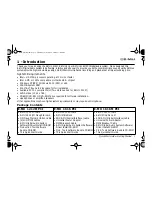
Operation Theory
49
ADLINK Technology Inc.
PCI-9524
Copyright 2008
User’s Manual
There are four programmable post-processing IIR digital filter
banks (2), one for each load-cell transducer input channel. Each
bank is a fixed-coefficient, variable-length IIR digital filter, and can
be instructed to flush itself once a large input-step is observed.
The processed data are pushed into the on-board FIFO for DMA
data transfer to PC memory; otherwise, they are read by user
applications directly, without buffering, through fast-polling data
transfers.
The software driver utilizes a look-up-table to correct the null offset
and gain error of the analog front-end, using a built-in 1.25k
Ω
bridge, to provide adequate absolute accuracy for applications
that do not calibrate load-cell transducers in the field. For applica-
tions that always perform null and gain calibrations in the field,
users can manipulate the 2's complementary binary code directly.
Throughout the acquisition and processing flow, remote-sensing
(3) and auto-zeroing (4) are working simultaneously to compen-
sate voltage drops over excitation wires, and to remove thermal
drift and 1/f noise in signal paths. The dynamic error compensation
is essential to achieve high-stability measurements; otherwise the
output will drift at a very low frequency that is difficult to be recon-
structed using any other post-filtering method.
4.2.2
How to Define a 1 in 200,000 Count Resolution
It is common in the weight-scaling or material-testing industries to
specify the resolution capability of a measurement device such as
PCI-9524, in Counts or Digits, rather than in bits.
NOTE:
NOTE:
1) For general purpose analog input channels, i.e. channels 4
to 7, the available gain ranges are 1, 2, 4, and 8.
2), 3), 4) The general purpose analog input channels, i.e. chan-
nel 4 to 7, do not support the remote-sensing and auto-zeroing
functions.
















































